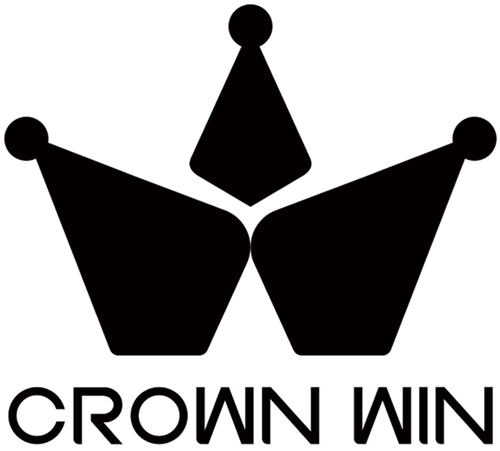Introduction
Think of having ordered your favorite meal to be delivered, it arrives in the bag too big and your small container rattles inside it, or even worse, it arrives in a bag that is too small such that when you pick it, the handles tear apart. This situation reoccurs thousands of times per day in restaurants and food business all over the world at the expense of money wasted in materials and some spoiled products together with unhappy customers.
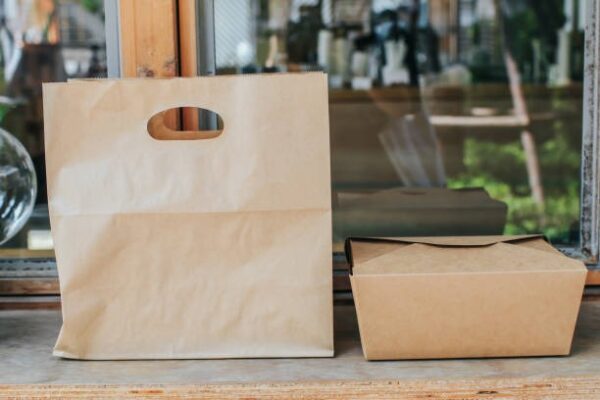
There is more than just ensuring that your products fit in the right size paper bag, it is a way of ensuring that you provide customers with a seamless customer experience, manage your costs and enhance your brand name. The right size take out bag will help to portray professionalism and attention to detail, whereas the wrong size will turn even high quality food into cheap or unprofessionally packed food.
This guide is a thorough resource, and you will find out how to correctly measure takeout paper bags, common sizes and their uses, available materials and types, and various other essentials, to choose the right size of a bag for your business. As a restaurant owner, a food truck operator, or a packaging professional, you will leave with takeout packaging knowledge as a way of optimizing your approach.
The Basics of Paper Bag Dimensions
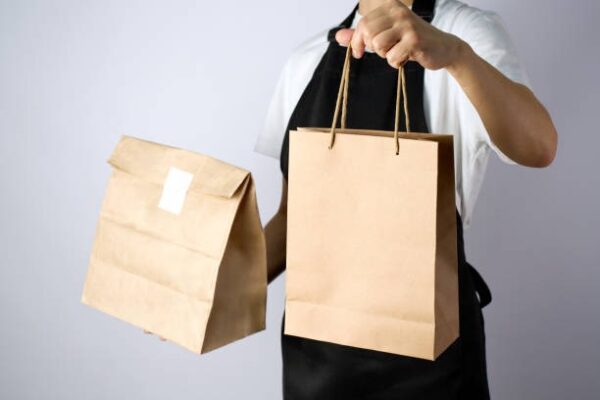
The knowledge of the size of the paper bags is the key to informed packaging. There are three important measurements of every paper bag, which define its capacity and functionality.
The width is the measure of the length of the front of the bag when the bag is erect. This dimension defines the width of things that one can fit comfortably in. The width influences the bag directly as it can be seen to be too skinny and too fat so as to create an awkward overstuffed appearance and too fat, respectively.
The height of the bag is measured using the top edge of the bag and the bottom of the bag, not including the handles. This vertical dimension defines the tallness of the items and overall proportion of the bag. Correct height makes goods not to look over the edge or to have a lot of blank space that will make portions look smaller.
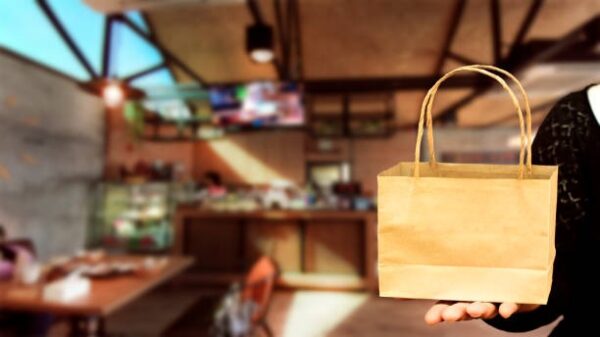
The distance that the bag passes forward and backward is called gusset (also known as depth or bottom width). This dimension forms the three-dimensional capacity of the bag and is important in carrying large or several items. The bag stands up when filled so a proper gusset is necessary to make it stable during transportation.
All of the dimensions are crucial towards the balancing of functionality and affordability. Excessive capacity in either direction is a waste of materials and raises the shipping costs, whereas lack of capacity undermines the product security and satisfaction of the customers.
How to Measure Paper Bag Size Properly
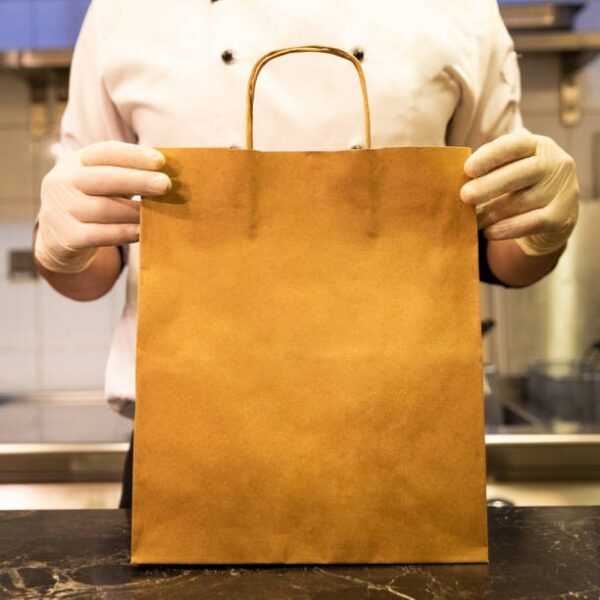
An accurate measurement should be taken to determine the suitable bag size and relay specifications to the suppliers. The right tools and technique will see you have what is required in your business.
Tools needed All one will require is a measuring tape or ruler that is flexible, a flat surface to place bags, and hopefully some sample products to test. A calculator assists in exchanging metric and imperial units in case one has to deal with foreign suppliers..
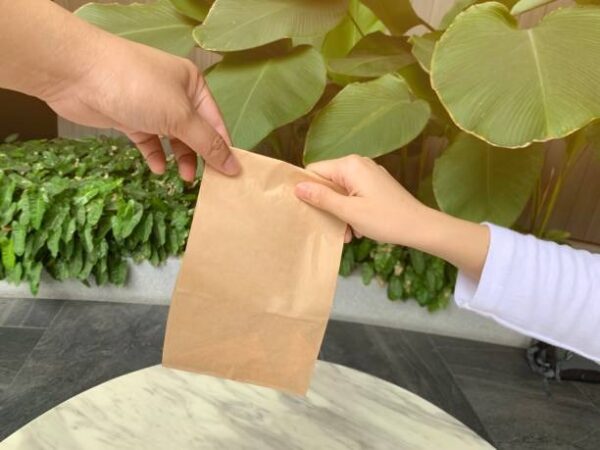
Step-by-step measurement process Measurement is done step-by-step starting with the bag lying flat on your surface. To measure width, measure across the bag on the widest line of the front face of the bag. In height, measure the distance between the bottom seam and the top the whole excluding the handle or fold over parts. In the case of gusset depth, measure either to the back face of the bag when the bag is fully developed or measure the triangular fold on the bottom and multiply it by two.
Important tips Some of these tips that are important in order to do an accurate measurement are to leave some additional space to the packaging material such as napkins, utensils or wrapping of the goods. Look at handle clearance-products must not be in the way of easy carrying. Use real products to test, instead of just using dimensions, because oddly-shaped objects might not fit on bag proportions with their size which suggests a certain proportion.
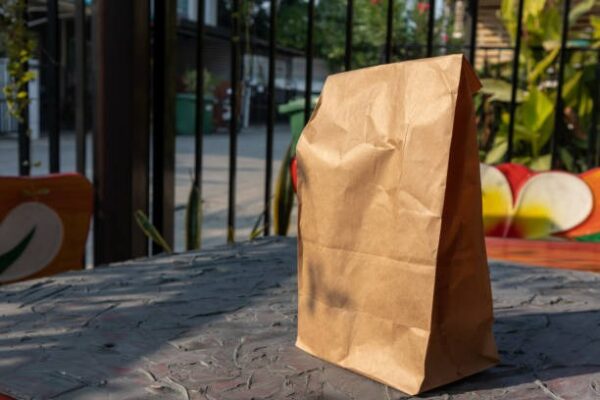
In case of measurements of bags available, always have several samples to take into consideration the manufacturing differences. Mark whether they have handle attachments in their measurements or not because different suppliers do not have the same different attachments of the handles that can influence your calculations.
Common Size Categories and Use-Cases
Knowing the standard size categories will enable you to find the right choice of each application fast and make contact with the suppliers and the customers.
Small Bags
Typical dimensions: 6 x 9 x 3 (15cm x 23cm x 8cm) to 8 x 10 x 4 (20cm x 25cm x 10cm).
Small bags are suitable in the case of individual snacks, single sandwiches, pastries or small desserts. They go well in coffee shops with muffins and cookies, delis with single side offerings or bakeries with their single portion packs. They are used in the smaller orders and reduce the waste of materials as well as being professional-looking with small bags.
What to watch: Make sure the handles are of the same size so they do not tear and use reinforcement of sharp-edged or sharp-comed objects.

Medium Bags
Usual sizes: 10x 12x 5 (25x 30x 13) to 12x 15x 6 (30x 38x 15)
Most of the normal takeout orders such as combo meals, family-style entrees, or a series of small items will be served in medium bags. They are perfect in restaurants where the portion sizes are average, food trucks where people order lunch, or cafes with meal offers.
What to pay attention to: Striking a balance between being large enough and not appearing to be too big to make portions look tiny. Take into account the gusset width of such products as pizza boxes or big containers.
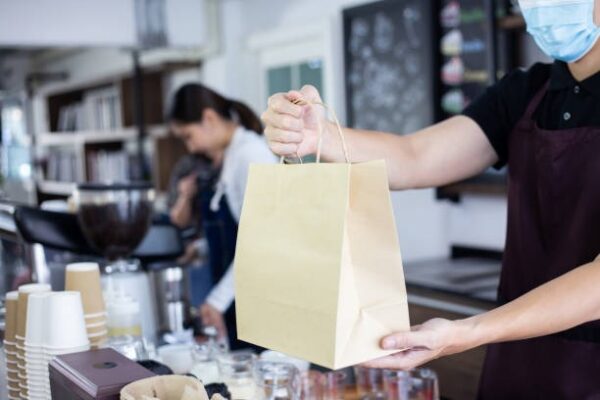
Large Bags
Average size: 14″ x 16″ x 8″ (36cm x 41cm x 20cm) up to 18″ x 20″ x 10″ (46cm x 51cm x 25cm)
Family meals, catering or bulk purchases are done in large bags. They are needed in restaurants where large numbers have to be served, grocery stores where food is made ready and businesses that do party platters.
Watch: Paper weight and handle strength should be enough to carry heavy loads. There can be doubled wall construction or reinforced handles when there is a need to have maximum capacity orders.
Industry-Specific Applications
Grease resistant materials and closed ends are the usual requirements in the food service. Wine bottles require special dimensions having protective inserts. Retail garments have taller and more narrow ratios, and gift products frequently involve the use of decorative materials with high-quality finishes.
Every application requires certain material characteristics and construction peculiarities not to be measured only by size.
Materials & Bag Types
Functionality, appearance and cost are very much influenced by the material that is used and therefore it is important to align the material properties with your particular needs.
Kraft paper also has good strength, natural look and environmentally friendly qualities. It is moderately greasy and takes printing very well, so it is used with organic foods, artisans, and brands that are environmentally conscious. Kraft paper is generally cheaper and has good performance as compared to other alternatives.
White paper provides a professional look that keeps clean and presents colorful branding in an efficient manner. It is perfect in high-end restaurants, medical food service or in any of the environments where a perfect presentation is needed. White paper is a little bit more expensive than kraft, though the quality of print is better.
Colored paper allows matching of the brand and producing a creative packaging that is unique. Colored papers to be used in food are to be chosen with care in order to be safe and not colorless. Although it is more costly, colored papers will remove the printing expense in simple designs.
Waxed and poly-coated papers are better in grease and moisture protection which is required on food that contains high amounts of oil, hot, or products that need to be stored long. Under these treatments, the cost is raised, but no ugly staining and structural failure occur.
Types of handle are twisted paper, flat paper, rope or ribbon. Handles that are twisted provide good grip and they also distribute the weight. Flat handles make it sleek but it might not be comfortable with heavy objects. The reinforcement solutions are to add more layers of paper, cardboard inserts or adhesive strips where stress occurs.
The finishes can be matte, glossy, or laminated, which influences the looks and functionality. Matte surfaces conceal the prints of fingers and have natural feel, whereas glossy surfaces make colors more vivid and are more likely to display the signs of handling.
Key Factors to Consider When Selecting Size
There are several factors that must be balanced in order to have a successful bag selection which chose to be functional and to be successful in business.
The basis of size selection is product dimensions and shape. Find the dimensions of your most frequent products and give them a thought about the most frequent combinations. Flexible boxes such as pizza boxes require varying proportions compared to round boxes or frontiers. Provide flexibility in product and seasonal products which may need to be accommodated.
Weight of products has a direct influence on the material requirements and handle design. A heavy object should have a stronger type of construction and comfortable covers, whereas a light product may be manufactured of more cost-efficient materials. Take into account the weight of a single item and average order.
The packaging material will add weight that has to be taken up. Napkins, knives, condiment wrappings, wrappings all take up space. Such promotional materials as flyers or loyalty cards should also be taken into account.
Branding and being appealing to the eyes are important factors on customer perception. A bag should not be too large or too small to increase perceived value, and extra large ones may make portions too small or too small ones may cut corners. Take into account the influence of the proportion of the logo on the placement and presentation of the whole brand.
The size requirements are influenced by the intended use. In-store pickup can be sized better because there is no storage issue because the consumption can take place immediately. The bags used to deliver may require more space due to any spill or other additions. Most gift applications are usually generously sized to make the unwrapping more enjoyable.
The balance between the material cost, shipping cost, and environmental impact is needed in cost effectiveness and sustainability. Large bags are a waste of material and could attract higher shipping expenses and small bags can be doubled bagged or cause customer dissatisfaction. Look at the aggregate cost per successful delivery and not unit price.
Size Charts & Quick Reference
| Size Category | Dimensions (W×H×D) | Metric (cm) | Typical Uses | Weight Capacity |
| Small | 6″×9″×3″ | 15×23×8 | Individual snacks, pastries, single sandwiches | 2-5 lbs |
| Small+ | 8″×10″×4″ | 20×25×10 | Combo meals, multiple small items | 3-7 lbs |
| Medium | 10″×12″×5″ | 25×30×13 | Standard takeout orders, family sides | 5-10 lbs |
| Medium+ | 12″×15″×6″ | 30×38×15 | Large entrees, multiple containers | 8-15 lbs |
| Large | 14″×16″×8″ | 36×41×20 | Family meals, catering portions | 12-20 lbs |
| Extra Large | 18″×20″×10″ | 46×51×25 | Bulk orders, party platters | 15-25 lbs |
Handle considerations: The types of handles are twisted paper handles, which can handle 10-15 percent of weight compared to flat handles. Handles are reinforced to add 20-30 percent capacity. Always use real products and normal conditions of loading.
Gusset Impact: It is usually provided with a 2-inch gusset that would allow the volume to increase by 40-50% with keeping the same footprint.
Tips to Optimize for Your Own Business
There are significant trade-offs to custom sizing versus standard sizes. Standard sizes have reduced minimum order, quicker delivery and competitive prices because of economies of scale. Custom sizes are great fit, unique branding potential and use material to the best but have greater minimum and lead time. A lot of businesses are successful with the help of standard sizes and special promotions or high volumes with custom sizes.
To determine cost versus appearance, one needs to know the customers and how to position the brand. By improving customer experience and brand equity, premium brands will be able to cover greater costs caused by increased packaging. Cost-effective operations must aim at functional sufficiency without compromising on appearance aspects that are satisfactory.
Anticipate seasonal fluctuations, advertising and expansion of the business. Special events around the time of the year would demand bigger size bags to carry the gift items or family dinners. The bundling offers may require exclusive bundles sizes during promotional periods. At the same time, make your packaging strategy flexible to manage these changes without having to keep too much inventory.
The prototyping and testing of samples is a way to avoid expensive errors and guarantee the satisfaction of the customers. Test with real products and common order combinations – order small quantities of various sizes. Test the handle comfort of loaded bags, storage needs and customer ratings before making large orders.
How to Find Quality Suppliers
Purchase questions that should be considered vital to the suppliers are minimum order levels, material available, personalization and quality certifications. Inquire about paper weight requirements (GSM), handle attachment requirements, and testing weight capacity requirements.
Qualty checking checkpoints are on paper thickness stability, handle fixing robustness, and the standard of its construction. Inspect and verify matching registration of printing, correct scoring and folding and lack of sharp edges or coarse cuts. Load attachment points of test handles and examine seam construction.
Among logistics factors, there are lead times of standard versus custom orders, shipping modes and expenses, and the support of inventory management. Define effective communication requirements and qualification criteria so that similar outcomes can be attained on several orders.
Good suppliers deliver samples, continue quality assurance, and give customer service. They are expected to know food service needs and offer relevant certifications to food contact application.
Conclusion
The choice of appropriate takeout paper bag size is the significant issue that influences the customer satisfaction, the operational expenses, and the brand image. The knowledge of correct measurement method, common size types, the types of materials, and important aspects of selection can be used to make effective decisions that can contribute to your business success. The investment of proper packaging will result in a payoff when it comes to the customer experience, waste reduction, strong brand presentation. Make time to weigh your regular products, experiment, and collaborate with suppliers of high quality so as to come up with a packaging policy that augurs well with your business objectives.
FAQ Section
What is the additional space that I would need to package the goods? Give about 10-15 percent more than your product sizes to fit in the napkins, utensils and condiments and other protection materials. In hot products that may need additional rates of insulation, use 20-25.
What is the size of the handles used in heavy objects? Orders of more than 10 pounds are best done with twisted paper handles that have reinforcement. Take into account rope or ribbon handles in high-end applications. Make certain that points of attachment of handles are supported by more paper or adhesive support.
What are the sizes that are the most cost-effective when ordered in bulk? Medium sizes (10″x12x5″ to 12″x15x6) are generally the most convenient in terms of versatility and price. These sizes suit the majority of standard orders at a reasonable cost of materials and shipping outcomes.
Are there any custom sizes available to small businesses and still afford them? Yes, by joining forces with other local firms in combined orders, beginning with custom printing on standard sizes, or by collaborating with suppliers with lower minimums to the customers in the region. First customize on the applications that are the most volume.
Which paper weight (GSM) should I use? In the case of lightweight products (less than 5 lbs): 120-140 GSM is suitable. In case of ordinary takeout (5-10 lbs): 140-170 GSM will do. Heavy (more than 10 lbs): indicate 170+ GSM construction with reinforcements. Always double the samples that you are testing on your actual products.
